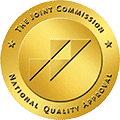You deserve a safe and supportive place to call home while in recovery. This article will provide insight into how to create this type of environment, helping you take a necessary step toward recovery success.

In this section, we’ll explore the strategies and methods that can be used to establish an environment that promotes healing and recovery. Our focus will be on two key sub-sections: Developing a Plan and Setting the Rules. We’ll look at creating a personalized strategy to ensure a supportive environment, as well as establishing clear and effective ground rules to maintain the safety of the living environment. Let’s dive in and see how we can create a safe and supportive living environment for addiction recovery.
Developing a plan is crucial to creating a supportive environment for addiction recovery. This involves devising a strategy that can help establish and maintain a safe living environment for those going through the journey of addiction recovery. It is imperative to have a solid plan in place as drug and alcohol addiction can be all-consuming, and relapse rates are high.
Developing a Strategy to Establish a Supportive Environment involves four critical steps:
To create an environment that supports addiction recovery, it is vital to consider multiple aspects. The environment should provide ample support from family members, friends, or professionals linked with the rehabilitation program. Apart from emotional support, controlling environmental triggers such as avoiding addicts or alcoholics, establishing peer monitoring systems, promoting healthy practices 24/7, socializing around healthier alternatives (like sporting events), and enjoying hobbies like painting or reading motivate individuals during their recovery process.
Recent research carried out by the National Institute on Drug Abuse (NIDA) suggests that people who spend prolonged periods engaged in treatment have greater opportunities for sustainable long-term outcomes. Thus, developing a strategic plan is critical towards establishing an enabling living arrangement post-rehabilitation.
So you’ve got your comprehensive plan! Now what? Let’s explore how you can create boundaries by setting rules and expectations for every individual residing in this supportive living environment with our next section – Welcome to the ‘Setting the Rules: Establishing Ground Rules and Expectations’ adventure!
When it comes to addiction recovery, one of the most important aspects is creating a safe and supportive living environment. This can be achieved through setting ground rules and expectations that safeguard the living environment.
Setting the rules helps to create a structure that supports recovery by establishing clear guidelines for behavior and expectations. This ensures that everyone in the living environment is on the same page and working towards a common goal. It also helps to reduce stress and conflict by providing a clear framework for communication and interaction.
One of the reasons setting rules works is because it creates accountability for all residents in the living environment. When everyone is aware of what is expected of them, they are more likely to follow through with their commitments. Additionally, following rules can help residents feel empowered as they take ownership of their own behaviors.
Valuable information when it comes to setting rules is taking into account each resident’s unique needs and preferences when establishing ground rules. Residents should also be involved in the process so that they have input into what is expected of them.
Some suggestions for creating ground rules could include establishing quiet hours, designating smoking areas, setting guidelines for visitors, and outlining expectations for cleanliness and personal responsibility. Each suggestion works because it sets clear expectations and boundaries while still allowing the individuality of each resident to shine through.
Next up – Defining Boundaries: Establishing Clear Boundaries Between Residents and Staff – Creating a safe environment requires not only boundaries between residents but also between residents and staff members who are there to support them on their journey towards healing.
In this part of the article, we’ll focus on the importance of defining boundaries between residents and staff in order to create a supportive living environment. By establishing clear boundaries, we can enhance the sense of safety and accountability in the living environment. We’ll also explore how implementing a system of accountability can ensure that the living space meets established safety standards. This expansion will take a deeper dive into how these strategies can be applied to create a more supportive living space.
As we seek to create a safe and supportive environment for addiction recovery, the implementation of a system of accountability is crucial. This system ensures that living standards remain safe and encourages residents to be responsible for their behavior and actions.
Accountability works by setting clear guidelines and boundaries for both staff and residents. It establishes consequences for breaks in these guidelines, thus ensuring that everyone is held responsible for maintaining a safe living environment. This system also provides an opportunity for residents to take ownership of their recovery journey and become accountable for themselves.
Reasons behind this implementation include the fact that addiction is a disease that affects not only the individual but also those around them. Creating a safe environment is essential in facilitating successful recovery, and accountability plays a key role in achieving this. Additionally, implementing accountability measures fosters a culture of respect, trust, and responsibility, which can have positive impacts on all aspects of life.
Valuable information regarding the implementation of accountability includes involving residents in the process. By holding regular meetings where residents can voice concerns or make suggestions about improving accountability measures, everyone becomes invested in creating a safe environment together.
Now that our foundation has been set with establishing an effective system of accountability within our community, let’s move forward towards developing a strong support system for addiction recovery – because we cannot do it alone.
In this segment, we’ll focus on developing a strong support system for addiction recovery.
First, we’ll discuss ways to establish a network of support from family and friends. Next, we’ll explore how appropriate addiction recovery programs and services can be an essential part of an overall recovery plan. With these two sub-sections, we hope to provide you with a comprehensive guide on developing a support system that works for you on your road to recovery.
Establishing a network of support from family and friends is crucial for building your recovery network. It provides you with a safety net, an emotional anchor, and a source of motivation to overcome addiction. Here are some tips to help you establish such a support system:
Building your network of support also involves educating yourself about addiction, recovery, and mental health. This includes understanding the signs of relapse, knowing where to go for help in case of emergency or crisis, seeking professional guidance when needed, and staying informed about new treatment options.
In addition to providing practical advice, building your network of support from family and friends is essential for creating emotional connections that can provide the foundation for long-term recovery success. By investing in these relationships and cultivating meaningful connections that serve as pillars of strength during challenging times, individuals can increase their chances of overcoming addiction.
Don’t miss out on the opportunity to benefit from the love and support that comes with establishing a strong network from family and friends. Take steps today to build these crucial connections that will carry you through difficult times.
Ready to take another step towards long-term recovery? In the next section, we’ll explore recovery programs that offer access to appropriate addiction recovery programs and services – because information is power!
Access to appropriate addiction recovery programs and services has become a vital aspect of addiction treatment. It helps individuals with substance use disorders by providing them with the necessary support to overcome their addiction. Recovery programs can range from inpatient or outpatient rehabilitation centers, support groups, 12-step programs, individual therapy, and group therapy.
Recovery programs work by providing individuals with a structured environment that promotes change and growth. By offering various forms of counseling, education, and behavioral therapies along with healthy coping mechanisms for stress management, it helps individuals regain control over their lives while reducing the risk of relapse. Recovery programs also provide a sense of community and accountability by allowing individuals to connect with others who are on the same journey towards recovery.
It’s known that not all recovery programs may be suitable for everyone. Thus, conducting research beforehand is essential to choose an appropriate program based on personal needs and preferences. Not all addictions are treated equally; therefore, it’s important to choose a program that addresses your specific struggles and goals. Factors such as severity of addiction, mental health history, financial ability must be considered when selecting an appropriate program.
The history of recovery programs dates back almost 200 years ago when Alcoholics Anonymous(AA) was founded in New York City for people struggling with alcoholism. The success rate was immense incorporating the 12-step program format that has since been adapted by almost all other recovery groups worldwide.
As you read through this article exploring ways to develop a strong support system for addiction recovery, get ready to create an environment filled with positivity so that your journey becomes more fulfilling than ever before!
In this section, we’ll be talking about how to create a positive environment for addiction recovery. By doing so, we can significantly increase the chances of success for ourselves or loved ones that are on the path to recovery.
First, we’ll explore the power of positivity and how promoting positive activities and events can make a significant impact. Then, we will discuss healthy lifestyle changes and how they can encourage and support long-term recovery. You don’t have to go through this process alone!
Positivity has the ability to transform lives and recovery from addiction is no exception. By creating a positive environment through promoting positive activities and events, success in recovery can be encouraged. When individuals undergoing addiction treatment are surrounded by positivity, they feel supported and motivated to continue their journey towards sobriety.
The power of positivity lies in its ability to inspire individuals to maintain healthy habits and practices. Positivity gives individuals hope for a better future, one beyond addiction. Engaging in positive activities like mindfulness, yoga, exercise, or arts therapy helps individuals to release stress and negative emotions which may trigger relapse.
One of the reasons why positivity works so well is because it boosts dopamine levels in the brain which acts as a reward system that promotes good feelings associated with sobriety. Furthermore, when an individual is surrounded by positivity, it becomes easier for them to identify triggers which lead to their addictive behaviors and avoid them.
Moreover, when people in recovery unite and participate in positive activities such as volunteering or community service projects, bonds are formed that go beyond sobriety. This leads to strong support systems that offer comfort, guidance and motivation during tough times.
Pro Tip: Surround yourself with positive people who will encourage you on your journey towards recovery. Go for walks in nature, meditate, or participate in yoga classes regularly for a true sense of calmness that promotes healing.
We all know how difficult it is to change habits, especially when they concern addiction recovery. However, healthy lifestyle changes can facilitate long-term recovery by encouraging and supporting individuals in making significant shifts in their mental, emotional, and physical well-being.
Healthy lifestyle changes aim at providing a balance between physical activity, nutrition, sleep hygiene and stress-relief techniques like mindfulness or meditation. Long-term recovery from addiction requires comprehensive care that addresses not only the symptoms of addiction but also the underlying causes. Addiction often affects one’s physical health significantly; therefore, following an active routine along with a nutritious meal plan is essential for overall wellness. The benefits of such lifestyle changes extend beyond just conquering substance abuse as regular exercise reduces anxiety levels, promotes sound sleep cycle and improves mental health. Healthy diet choices can boost immunity and cognitive functioning.
To encourage healthy lifestyle changes effectively, establishing living environments free from triggers that may trigger addictive behavior is crucial. Supportive living arrangements offer a safer space for individuals to focus on their healing journeys, participate in community activities or therapy sessions while receiving regular medical attention if necessary. Understanding what triggers addictive behaviors can help reframe our subconscious thoughts to more positive interactions with ourselves and our social spheres.
History has shown us widespread instances of rehabs being centers with little emphasis on keeping residents involved in any productive activity or helping foster life skills after staying sober in long-term care facilities. These practices have now been deemed ineffective for long term support- unlike so today’s rehab facilities which adapt treatment according to an individual’s daily routines outside therapy which offers a more realistic perspective of expected daily balances.
In the next section of this article about Managing Conflict and Stress in a Supportive Environment for Addiction Recovery– we will discuss building desirable resiliency habits.

Meeting conflicts and managing stress can be really challenging in addiction recovery, especially if the living environment is lacking support and safety. However, dealing with conflict and stress is essential to sustain recovery and support improvements in mental and physical well-being.
In this section, you’ll receive detailed insight on how to manage conflicts proactively, and develop effective resolution plans and strategies to reduce stress in a supportive living environment. These sub-sections will also explore evidence-based practices and techniques to overcome addiction obstacles and create a supportive place for the recovery journey.
The topic of this article is managing conflict and stress in a supportive environment for addiction recovery. One important aspect of creating such an environment is developing a proactive plan to manage conflict and mitigate stress. In order to achieve this, it’s essential to understand what conflict resolution entails, what strategies can be used, and why it’s so important in the context of addiction recovery.
Conflict Resolution: Developing a Proactive Plan to Manage Conflict and Mitigate Stress involves several key points that can help individuals create a safe and supportive living environment. Firstly, it requires identifying potential sources of conflict within the group or community, whether they relate to differing personalities, values, or objectives. Next, individuals must develop communication skills that allow them to express their thoughts and feelings effectively while also actively listening to others’ perspectives.
Thirdly, creating a proactive plan for managing conflict means setting clear expectations for behavior and accountability within the group. This could involve developing ground rules around communication and addressing conflicts before they escalate into larger issues. By doing so, individuals can feel supported by their peers while also taking responsibility for their own actions.
In addition to these strategies, there are other valuable pieces of information that can help individuals manage conflict and mitigate stress. For example, research suggests that mindfulness practices like meditation can be highly effective in reducing stress levels and promoting peaceable interactions between people.
An important fact about conflict resolution comes from a study conducted among incarcerated women participating in an addiction treatment program. The study found that implementing conflict resolution strategies within the program not only reduced incidents of violence but also led to higher rates of program completion as women felt more supported by their peers.
Ultimately, creating a supportive living environment for addiction recovery relies on proactively managing conflict and stress. With these strategies in mind – including identifying potential sources of tension, developing communication skills, enforcing accountability measures, practicing mindfulness techniques – individuals can work towards building stronger, healthier connections with those around them.
Evidence-Based Strategies, which are techniques and methods that have been proven to be effective through scientific studies and research, can be utilized to overcome addiction challenges and resolve conflicts. These strategies aim to provide a safe, supportive environment for individuals undergoing addiction recovery by focusing on evidence-based techniques that have been scientifically proven to achieve positive outcomes.
One reason why evidence-based strategies work is that they are grounded in empirical research. They have been tested under controlled conditions and found to be effective. Therefore, they provide a reliable method for addressing and resolving conflicts.
One such strategy is Cognitive Behavioral Therapy (CBT), which focuses on helping individuals identify and manage negative thought patterns that contribute to addictive behavior. CBT has been found to help individuals struggling with addiction by reducing cravings, improving coping skills, and preventing relapse.
Another valuable evidence-based strategy in addiction treatment is Motivational Interviewing (MI). This technique helps people explore their motivation for change through dialogue with a trained therapist. MI has been shown to improve self-esteem and increase people’s belief in their ability to change.
A study published in the Journal of Substance Abuse Treatment states that support groups like Alcoholics Anonymous (AA) also incorporate some evidence-based strategies such as peer support networks, mutual help mechanisms, and cognitive-behavioral tools in their programs. AA meetings may not suit everyone’s needs but those who attend regularly are more likely to abstain from drugs or alcohol than those who do not participate in such support groups.
Overall, utilizing evidence-based strategies is essential when it comes to overcoming addiction challenges and resolving conflicts. By implementing proven methods based on scientific research, an individual can experience the benefits of treatment for well-being while moving towards recovery with confidence.
A safe and supportive living environment for addiction recovery is a place where individuals with addiction can live in a structured and sober setting. It provides a supportive community and services to help them on their journey to sobriety.
Important factors include having a structured living environment with rules and regulations, access to support services and addiction treatment, a sense of community with fellow residents, and a supportive staff that provides guidance and accountability.
Support services can include access to addiction treatment counseling and therapy, recovery coaching, job training and placement, and educational opportunities. Additional support may also be available for mental health issues or legal and financial problems related to addiction.
Living in a safe and supportive environment during addiction recovery can provide structure accountability, and support during a vulnerable time. It can also help individuals develop healthy habits and social skills for successful long-term recovery.
Anyone who is struggling with addiction and looking for a safe and supportive space to begin their recovery journey can benefit from a safe and supportive living environment. This can include individuals who have completed addiction treatment and are looking for continued support, as well as those who are just starting their recovery process.
You can search online for sober living homes or transitional living programs in your area. You can also ask for recommendations from addiction treatment centers, therapists or recovery support groups. It’s important to research different options and visit the facilities before choosing one to ensure it’s a good fit for your needs.
Get confidential help 24/7. Call now for:
Related Articles
Get Help Now
Medical Advice Disclaimer
Magnified Health Systems aims to improve the quality of life for people struggling with substance use or mental health disorder with fact-based content about the nature of behavioral health conditions, treatment options and their related outcomes. We publish material that is researched, cited, edited and reviewed by licensed medical professionals. The information we provide is not intended to be a substitute for professional medical advice, diagnosis or treatment. It should not be used in place of the advice of your physician or other qualified healthcare providers.

Dr. Bickley graduated from U.C. Irvine with honors: Phi Beta Kappa, Golden Key International Honor Society, Cum Laude. He has been featured on national radio and print media. He is also a frequent lecturer at National Conferences. He holds an A.S. degree in Drug & Alcohol Studies, and two B.A. degrees in Criminology & Psychology, and masters and doctoral degree in Clinical Psychology. He is a licensed California Drug & Alcohol Counselor Level II, a licensed Clinical Supervisor and is certified in treating Eating Disorders.
Call Us Now, Our Admissions Team Is Standing By And Available 24/7.

Head Office Location:
1530 N Federal Hwy Lake Worth, FL 33460
Contact & Feedback:

We are here for you.
We are here for you, Call us and get started!
